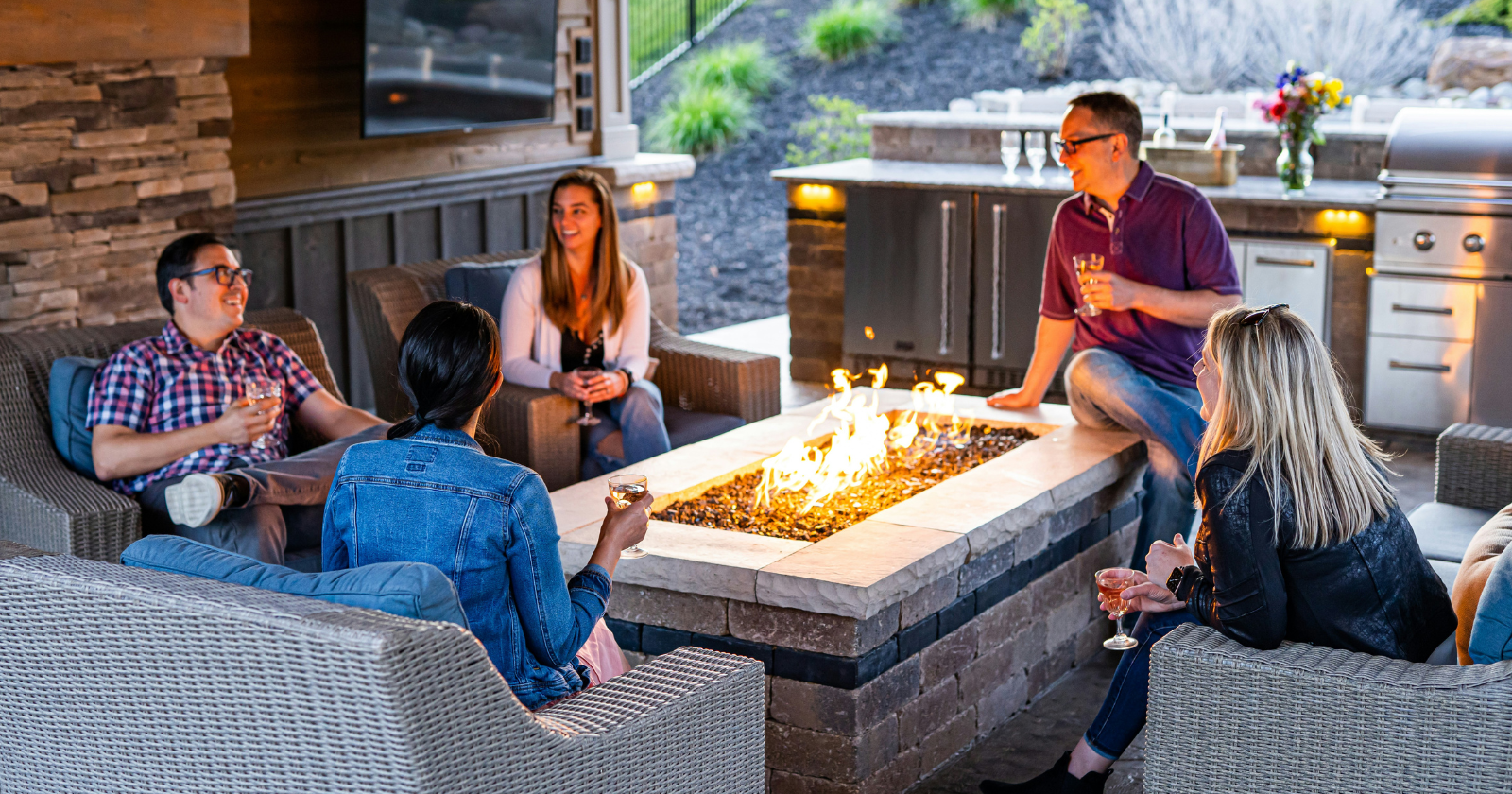Parenting doesn’t stop when our kids grow up. It just changes shape.
If your family is anything like mine, you’ve discovered that strong opinions can show up right next to the mashed potatoes.
Politics, money, relationships, how to raise the grandkids—topics with heat sneak onto the plate.
I’ve had dinners that felt like tiptoeing through a minefield, and I’ve had evenings that ended with hugs and laughter. The difference wasn’t what we discussed. It was how.
Here are nine ways I’ve learned to disagree with adult children without turning dinner into a debate. None of these require you to bite your tongue forever or pretend to agree. They’re simply ways to keep the relationship—and the meal—intact.
1) Lead with curiosity, not conclusions
I still have to remind myself: curiosity first, commentary second.
Before I share my view, I ask a simple, sincere question like, “How did you come to see it that way?” or “What personal experience makes this feel important to you?”
Adults don’t need lectures; they need to be heard. When I lean in with curiosity, I often discover context that softens my stance. Sometimes, I even change my mind (don’t tell my grandkids—they think I’m stubborn).
Try a ratio: ask two honest questions for every one opinion you offer. And ask them to do the same. That small structure lowers the heat and keeps the conversation human.
2) Separate issue from identity
Our kids are not their opinions, and neither are we.
I remind myself: “We’re on the same team, even if we disagree about the play.” I’ll say out loud, “I love you. Nothing about this conversation changes that.” It sounds obvious, but naming the bond helps everyone exhale.
Related Stories from The Artful Parent
Then I try to criticize ideas, not people. “I have concerns about that policy,” lands very differently than, “People who support that are clueless.”
When the person is safe, the disagreement can be sharp without becoming a stab.
3) Use body wisdom to slow the spiral
As a sixty-something granddad, I’ve learned my nervous system often knows I’m getting heated before my brain admits it. Tight jaw? Shallow breath? Fork suddenly clanking like a cymbal? That’s my cue to pause.
I’ll take a sip of water, plant my feet, and breathe out longer than I breathe in. I’ve even said, “Give me ten seconds, my heart’s racing.” That tiny reset keeps me from saying the thing I’ll be apologizing for later.
If you struggle with this, a quick pre-dinner pact helps: “If either of us feels amped up, let’s take a thirty-second breather—no eye-rolling, no scorekeeping.”
You’d be amazed how much conflict evaporates with oxygen.
- My Boomer mother was wrong about almost everything and these 6 things she said still run my life anyway - Global English Editing
- You know you’re aging beautifully when these 7 simple moments bring you pure joy - Global English Editing
- If your adult children rarely call or visit, you’re probably still doing these 7 things without realizing it - Global English Editing
4) Swap stories for stats
Nothing wrong with data. But I’ve noticed that when we start hurling facts like frisbees, dinner gets competitive, not connected. Stories, on the other hand, slip past defenses.
Instead of, “Studies show…,” I’ll say, “A friend went through something similar, and here’s what I saw up close,” or, “When I was your age, I made X choice—and here’s the cost.”
Personal experience isn’t a trump card; it’s a bridge. And bridges hold weight better than soapboxes.
As I covered in a previous post, when we connect experience to a value—fairness, safety, freedom—it helps the other person see our heart, not just our headline.
5) Agree on “table rules” before you need them
A little prevention is worth a thousand apologies.
Before holidays or birthdays, I’ll text my adult kids: “Let’s enjoy dinner. If hot topics come up, here are our house rules: we take turns, no interrupting, and if anyone calls ‘time,’ we change topics and pick it up another day.”
Simple. Clear. Mutual.
If something does flare up, I might say, “Let’s shelve this for after dessert,” or even, “I care about this and about you. Can we circle back tomorrow on the phone?”
It’s not avoidance; it’s protecting the gathering we came to share.
6) Find the 10% you can genuinely affirm
Even in our biggest disagreements, I can usually find a sliver of shared ground. Maybe we both care about fairness, or safety, or honesty—our paths diverge on how to get there.
When I name that, tension loosens. “I think we both want the grandkids to grow up kind and strong. My worry is just about method.”
That 10% acknowledgment is like pouring cool water on hot coals. The fire doesn’t vanish, but the sparks stop flying.
And yes, sometimes the 10% is as small as, “You clearly put a lot of thought into this.” Respect is never wasted.
7) Set boundaries without ultimatums
Boundaries are not punishments. They’re agreements to protect connection.
If a topic reliably turns dinner into a courtroom, I’ll set a boundary: “I’m willing to chat about this, but not tonight,” or “If voices go up, I’m going to step outside for five minutes.” Calm, predictable, no drama.
Boundaries also apply to responsibility. One line that’s helped me—and it might help you too—comes from a book I’ve mentioned before: “Their happiness is their responsibility, not yours.”
When I remember that, I stop trying to manage everyone’s moods at the table, which is a relief for all.
8) Repair quickly when you misstep
I wish I could say I always handle disagreements with Zen-like grace. I don’t. I’ve interrupted. I’ve made snide asides. I’ve tried to “win.”
What changes the trajectory is quick repair. I’ll text that night: “I got defensive. I’m sorry. You deserved more listening and less lecture. I love you.”
That small act moves the relationship back into alignment. And the next conversation starts on steadier ground.
Repair doesn’t require groveling or pretending you don’t hold strong views. It just says, “The way I held my view could have been kinder.” That humility models exactly what we want to see from our kids—at any age.
9) Choose connection over conversion
At some point in the evening, I silently pick a goal: Do I want to convert or connect? If I choose conversion, I’ll escalate without meaning to. If I choose connection, I’ll keep curiosity alive, even when we disagree.
Here’s a practice that helps: ask for their “north star” and offer yours. “What value are you protecting most here?” Then share your own.
You may still part ways on the solution, but you’ll understand each other’s why. That changes the climate.
And if the moment’s too charged, I’ll name the limit kindly: “We might just see this differently for a while. That’s okay with me. Pass the green beans?”
A quick note about emotions, because they’re always under the table with the napkins. The older I get, the more I trust them as messengers.
Anxiety? Usually telling me I’m afraid of losing closeness.
Frustration? Often a boundary asking to be spoken.
Fear? A signal that something important feels threatened.
Rudá Iandê puts it well in his new book, Laughing in the Face of Chaos: A Politically Incorrect Shamanic Guide for Modern Life.
I’ve mentioned this book before, and it continues to help me be a steadier parent and grandparent. One line I underlined for these family conversations: “Until our intellect stops fighting our emotions, there can be no true integration between these two essential aspects of our being.”
The book didn’t give me a script; it gave me steadier footing.
His ideas—like listening to the body’s signals, questioning inherited beliefs, and choosing authenticity over perfection—remind me to show up as a whole person, not a walking debate team.
If you’re new to his work, Rudá is a founder of The Vessel, and his writing nudged me to let go of the “perfect dinner” fantasy and focus on real connection.
The book inspired me to treat discomfort at the table as information, not danger, and to anchor in values before I open my mouth. If you’re curious, give it a look. It’s not a parenting manual, but the wisdom travels well to family life.
Practical scripts you can steal tonight
Because I like leaving folks with tools, here are a few pocket phrases I use when the conversation starts heating up:
-
“I want to understand before I share my take. What feels most at stake for you here?”
-
“We both care about fairness. We just see different paths—tell me more about yours.”
-
“I’m getting worked up. Thirty-second breather?”
-
“Let’s park this until tomorrow; I don’t want to ruin the night.”
-
“I hear you. I still see it differently. I love you, and that doesn’t change.”
None of these require a personality transplant. They just turn the temperature down so everybody can enjoy the meal.
Why dinners matter more than debates
When I look back at my own parenting, the conversations my kids remember most aren’t the ones where I “won.” They remember how I made them feel when we disagreed. Did I respect them? Did I trust their capacity to think? Did I let them be their own person?
That’s the long game of family: raising adults who can hold a view, hear another, and still choose relationship. It’s not about never disagreeing. It’s about disagreeing without turning each other into enemies.
And yes, there will be nights when we get it wrong. Voices rise. Someone storms off. That doesn’t mean we’re broken. It means we’re human. Repair, reset, and try again next Sunday.
A gentle reframe for the road
If you catch yourself gearing up for a duel, remember: we don’t have to resolve everything over one meal. We can leave threads hanging and pick them up on a walk, a call, or while washing dishes. We can be thoughtful without being thorough. And we can love strongly while holding our ground.
So the next time a hot topic lands between the roast and the rolls, try curiosity, boundaries, and a dash of humor. Keep your nervous system on your side, choose stories over stats, and aim for repair over victory.
I’ll be the first to admit I don’t always nail it. But I’ve noticed that when I use these nine approaches, dinner ends with “Goodnight, love you,” more often than, “We’ll talk when you calm down.”
And that’s a win worth savoring.
Which one will you try at your next family meal?



